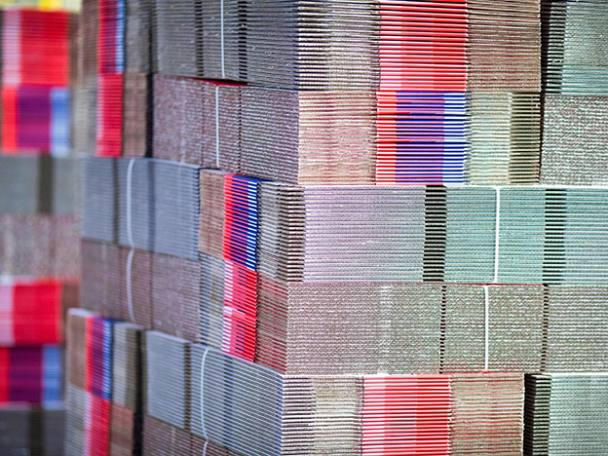Cardboard acquired an unlikely lustre during the pandemic. Supernormal demand and rising prices caused packagers’ profits to surge in 2021, and growth continued into 2022 even as volumes slipped. Now, however, the dynamics have reversed. Customers are destocking, falling input costs are translating into lower prices, and the FTSE 100 box makers are lamenting the uncertain economic backdrop.
Dig a little deeper, though, and a more nuanced picture emerges. Mondi (MNDI) and Smurfit Kappa (SKG) both published their half-year results this month and, while both reported a fall in profits, the pain wasn't shared evenly. Mondi had a significantly rougher ride, with sales down by 14 per cent and underlying Ebitda tumbling by almost 30 per cent. Revenue at Smurfit Kappa declined by a less extreme 9 per cent, which dented adjusted Ebitda by just 5 per cent.
When first looking at the cardboard giants, it’s easy to get lost in a maze of ‘testliner’, ‘kraftliner’ and ‘sawn timber spruce’. However, the industry jargon masks some basic differences between the packagers, which explains their diverging figures.
Both Mondi and Smurfit Kappa manufacture containerboard, the raw material that is used to make cardboard boxes. However, while Smurfit Kappa has a fully integrated model – meaning it makes as much paper as it needs for the packaging it goes on to produce – Mondi makes more paper than it requires and sells the excess on the open market. The UK’s third packaging giant, DS Smith (SMDS) sits at the other end of the spectrum and has to buy paper.
Mondi’s focus on upstream production is advantageous when it can charge a lot for paper. After peaking in the middle of last year, however, prices have been falling steeply and the company is painfully aware of the reversal.
Smurfit Kappa is better protected as it sells boxes, and a fall in paper prices does not immediately result in an equivalent fall in the price of packaging – particularly if some sort of value is being added for customers.
"The raw material – containerboard – while high in quality lacks differentiation as a standalone product and brings cyclicality,” said David O’Brien, head of industrials research at Goodbody.
“That's why integration into the downstream operations (corrugated packaging) is integral. Here, sustainability, customer service, design and innovation... bring more stable pricing/earnings. Smurfit Kappa has invested heavily in that end of the business over the last five years and that’s why return on capital employed has got better and better.”
Jefferies analyst Cole Hathorn added that Smurfit Kappa “manages its assets really well”, tailoring how much paper it manufactures to meet demand. “I have a strong view that the integrated paper producers will massively outperform versus the wider industry,” he said.
That’s not to say that Mondi has lagged behind its rival in the past. For several years, it has boasted better margins, better return on capital and a higher valuation. This is partly because the group has a structural advantage: upstream paper production is higher-margin than downstream conversion. However, a key part of Mondi’s appeal has long been its ability to keep costs down and, according to analysts, its mills are “bigger and better” than those of its peers.
Since 2017, however, the performance gap has narrowed, and Smurfit Kappa has grown its profits significantly faster than Mondi, while achieving a similar operating margin. “From an investment standpoint, Smurfit Kappa is winning in terms of quality perception,” said Hathorn.
Looking ahead
The short-term outlook for the packaging industry is still hazy. Smurfit Kappa noted some “encouraging signs of improvement” in its interim results, and reported that box volumes improved in the second quarter of 2023 versus the levels seen in the preceding two quarters.
The dip in European box shipments has certainly been extreme, reaching levels not seen since the financial crisis.
Meanwhile, containerboard prices appeared to hit a trough in the second quarter of 2023, and Jefferies said there was a chance of a “small hike” in prices by the end of the year, which would be good news for the whole sector.
Mondi isn't out of the woods yet, however. For starters, unlike its two main rivals, it doesn’t just make cardboard. It also sells flexible plastic packaging, which has a longer, knottier supply chain.
Perhaps more importantly, however, it is still trying to shift a sizable Russian business. Mondi has managed to offload three Russian converting plants since the war with Ukraine broke out, but efforts to sell a huge mill in Syktyvkar have fallen apart.
The board “remains committed” to divestment and has received conditional offers “from a number of potential buyers”, but it’s increasingly uncertain whether there will be any proceeds to distribute among shareholders. Meanwhile, Mondi itself has lost a high-margin division which formerly generated a fifth of its cash profits.
The coming months are likely to be challenging for packagers, but the outlook does look to be improving. Investors should be wary of additional uncertainty, however, and keep an eye out for DS Smith’s October trading statement, which should provide more details on the ever-fickle demand issue.












